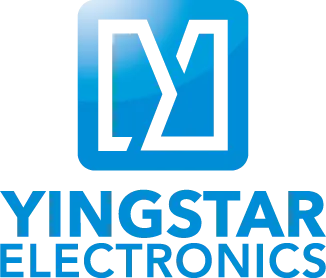Connectors, heatsinks, enclosures, and so on are all used in PCB assembly to finish the final product.
PCB assembly should be taken into consideration early in the design phase to avoid having issues during assembly.
Problems are almost certain to occur if the assembly process is neglected during the design process. When seen in isolation, the board may appear to be perfectly correct, but during pcb assembly process, many problems may appear. Even a product that doesn’t operate or doesn’t perform well could be the result.
If you’re designing a circuit board, think about how it will fit with other components while you’re assembling it. During the design phase, every choice you make should be weighed against the assembly process. If your decision prolongs or complicates the assembling process, you should rethink it.
With the help of this guideline, the assembler will be able to mount components to the PCB in an efficient and accurate manner. Prototype assembly and production assembly are two separate steps in the assembling process. Consider these two stages as part of the DFA during the design process.
Prototype Assembly
This is the procedure for assembling a prototype for testing. The prototype determines whether or not the components are attached securely and appropriately. You are required to comply with the clearance and tolerance limitations. During the design process, you should verify that the following DFA measures are adhered to:
1.The components and pads should match with each other.
2.The component spacing needs to be sufficient.
3.The component marks and identifications areprecise.
4.It is important to adhere to drill-hole regulations such aspect ratio and hole tolerance.
5.It’s important to adhere to the application instructions for solder masks.
6.Thermal relief must to be enough.
7.Guidelines for board edge clearance must be followed.
Production Assembly
Production assembly adheres to the same requirements as prototype assembly, but further takes into account high volume production, component stability and availability. During the design phase, you must take the following DFA precautions in addition to those taken during prototype assembly:
1.The sizecanbe penalized.
2.Specify the sorts of quality controls to be applied.
3.The components must be easily accessible.
4.The board should be able to endure the conditions it will face, such as vibrations.
Design Guidelines For Assembly (DFM)
The following suggestions are helpful during the design phase to ensure that the circuit board and other components can be assembled conveniently and effectively.
Use common and easily accessible components. You should make sure the components you plan to use are accessible. In order to prevent having components whose end of life (EOL) is closer, you need also confirm that they are still being produced. Doing so will prevent further delays. Lower costs, improved quality, and less inventories are the results of using standardized and readily available components. Unique parts are more expensive and are more likely to have quality issues.
Rules for Component Spacing. When designing the board, make sure components aren’t too close or far apart. Components shouldn’t overlap. Too close proximity can produce complications requiring redesign. To avoid spacing concerns, ensure sure each component’s footprint has appropriate room.
Component Orientation and Handling. To ensure that components orient themselves consistently when assembled, a well-designed circuit board is essential. Orientation of components can lead to issues. Problems might emerge when polarized capacitors and diodes face each other in the wrong direction. This dictates whether the board can be built, what soldering techniques are employed, and what thermal reliefs are needed. Some components emit electrical noise when they are placed too near to each other. In order to avoid causing cracks, drill holes should not be placed at the board’s edge.
Strictly comply with the Footprint Datasheet. The recommendations make it easier to create accurate imprints and identifications, which in turn helps to reduce the number of pad mismatches. Ignoring these advice will result in an inaccurate footprint, which may need the circuit boards to be completely redesigned and re-fabricated before they can be used.
Update Bill of Materials: The bill of materials (BOM) is essential, and any mistakes could result in delays in the project. You must review the BOM whenever the design is modified. The proper component number, description, and values must be updated for any component additions or changes.
Working Environment. PCBs can work in a range of settings with different environmental conditions. For some boards that will be utilized in an environment with a lot of vibration and movement, through-hole components are preferred since they are more securely attached than surface mount devices (SMDs).
Thermal Relief: To ensure good operation of the board, heat produced by some PCB components must be removed. Additionally, heat that is produced during the soldering process needs to be expelled. The circuit board should be made so that the parts can swiftly dissipate heat and survive soldering.
Track Routing: In order to prevent interference with the board or the placement of other components, track routing should be planned in accordance with a set of rules. Maintain traces at least 0.025″ away from the edge, for instance. Traces that are not aligned correctly with pads or vias may result in poor solder connections.
If you still have any doubts about the PCB design guidelines, please email us, our engineers will provide you with a detailed explanation.


